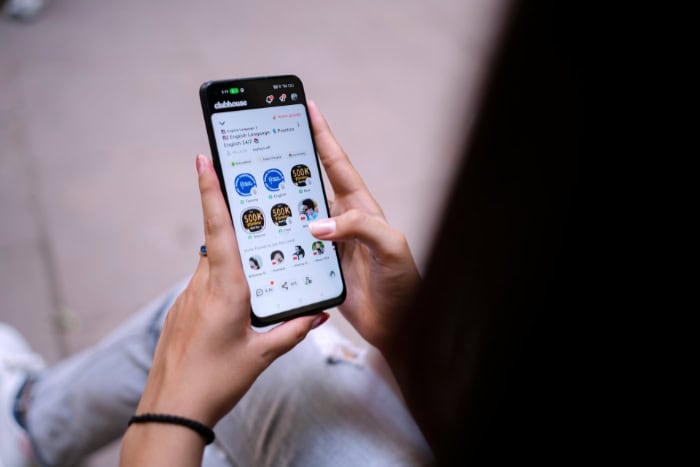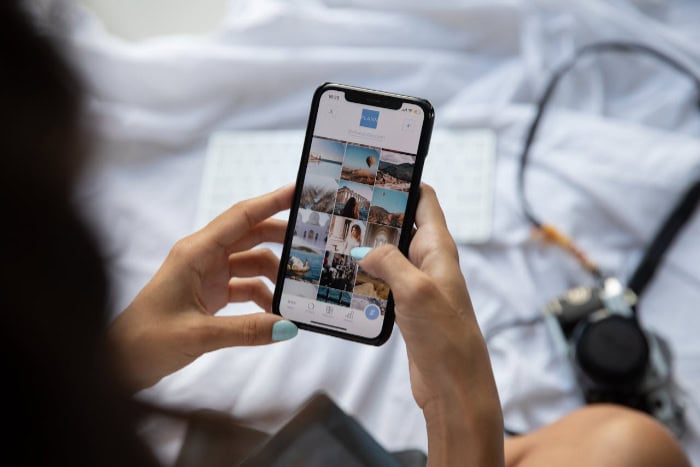Why Is My Mobile Data So Slow? Quick Fixes You Need

Sluggish mobile data can turn a simple task into a test of patience. One moment you're scrolling through social media, the next you're staring at an endless loading screen.
This modern inconvenience affects millions of smartphone users daily, disrupting work, communication, and leisure activities. But what causes these frustrating slowdowns?
Is it your device, your location, or something else entirely? Unraveling the mystery of slow mobile data requires examining various factors, from network technologies to environmental conditions.
Common Causes of Slow Mobile Data
Mobile data slowdowns can be incredibly frustrating, especially when you need quick access to information or want to stay connected on the go. Several factors can contribute to sluggish mobile data speeds, ranging from network-related issues to physical obstacles.
Weak Signal Strength
One of the primary reasons for slow mobile data is a weak or unstable signal. Signal strength refers to the power of the cellular network connection your device receives from nearby cell towers.
When your phone displays fewer signal bars, it indicates a weaker connection, which often results in slower data speeds.
Weak signals can occur for various reasons. Distance from cell towers is a significant factor; the farther you are from a tower, the weaker your signal becomes.
This issue is particularly common in rural areas or regions with sparse cellular coverage. Additionally, being inside buildings, especially those with thick walls or metal structures, can significantly reduce signal strength.
To address weak signal issues, try moving to a different location, such as near a window or outdoors. If you consistently experience poor signal strength at home or work, consider investing in a cellular signal booster to amplify the existing signal.
Network Congestion
Network congestion occurs when too many users are trying to access the same cellular network simultaneously, overwhelming its capacity. This situation is similar to traffic jams on highways during rush hour – the more devices competing for bandwidth, the slower the overall speed for each user.
Congestion is often time and location-dependent. For example, you might experience slower speeds in densely populated urban areas during peak hours, such as lunchtime or after work.
Large events like concerts or sports games can also lead to localized network congestion as thousands of people in one area use their devices simultaneously.
Physical Barriers and Interference
Physical obstacles can significantly impact mobile data speeds by blocking or weakening signals. Common barriers include:
- Buildings: Concrete, metal, and certain types of glass can obstruct cellular signals.
- Natural landscapes: Mountains, hills, and dense forests can interfere with signal transmission.
- Weather conditions: Heavy rain, snow, or dense cloud cover can temporarily affect signal strength.
Additionally, electromagnetic interference from other electronic devices or power lines can disrupt cellular signals. This interference is often more pronounced in urban areas with a high concentration of electronic equipment.
To overcome these barriers, try changing your location or moving away from potential sources of interference. If you're indoors, moving closer to windows or stepping outside can often improve signal quality and data speeds.
Data Plan Restrictions
Sometimes, slow mobile data isn't due to external factors but is a result of limitations imposed by your cellular plan. Many carriers offer tiered data plans that provide high-speed data up to a certain limit, after which speeds are significantly reduced.
For example, a plan might offer 10GB of high-speed data per month. Once you exceed this limit, your carrier may throttle your speeds to 2G or 3G levels for the remainder of the billing cycle.
This practice, known as data throttling, is used by carriers to manage network resources and encourage users to upgrade to higher-tier plans.
To avoid data plan-related slowdowns, monitor your data usage regularly using your device's built-in tools or your carrier's app. Consider upgrading to a plan with a higher data allowance if you frequently exceed your current limit.
Understanding Mobile Data Technology

Mobile data technology has evolved rapidly over the past few decades, bringing faster speeds and improved connectivity to users worldwide. To grasp why your mobile data might be slow, it's essential to have a basic understanding of the underlying technology that powers our cellular networks.
Evolution of Mobile Networks
Mobile networks have progressed through several generations, each offering significant improvements in speed, capacity, and functionality. The three most recent generations – 3G, 4G, and 5G – have shaped the mobile data landscape we experience today.
3G, or third-generation networks, marked the beginning of true mobile internet. Introduced in the early 2000s, 3G allowed for faster data transfer speeds compared to its predecessors, enabling basic web browsing and email on mobile devices.
However, by today's standards, 3G is considered slow, with typical speeds ranging from 0.5 to 5 Mbps.
4G, the fourth generation, arrived in the 2010s and dramatically improved data speeds.
With theoretical download speeds of up to 100 Mbps (though real-world speeds are often lower), 4G made streaming video, online gaming, and other data-intensive activities possible on mobile devices.
4G networks are still widely used and form the backbone of mobile data in many areas.
5G is the latest generation of mobile network technology. Launched in select areas starting in 2019, 5G promises ultra-fast speeds, with theoretical peaks of up to 20 Gbps.
Beyond speed, 5G also offers lower latency and the ability to connect many more devices simultaneously. This technology is still in the process of widespread deployment and will continue to evolve in the coming years.
The generation of network you're connected to can significantly impact your data speeds. If you're experiencing slow data, check if you're connected to a 3G network instead of 4G or 5G. Your phone usually displays this information in the status bar.
Bandwidth and Carrier Aggregation
Bandwidth refers to the amount of data that can be transmitted over a network connection in a given time. In mobile networks, bandwidth is closely tied to the radio frequency spectrum allocated to each carrier.
More bandwidth generally means faster data speeds and better performance.
Carrier aggregation is a technique used in 4G and 5G networks to increase bandwidth and, consequently, data speeds. This technology allows mobile devices to receive data over multiple frequency bands simultaneously, effectively combining them into a single, wider channel.
For example, instead of using a single 20 MHz channel, a device might use two 20 MHz channels for a total of 40 MHz, potentially doubling the data speed.
The benefits of carrier aggregation become apparent in areas with good network coverage and on devices that support this technology.
If you're in an area with carrier aggregation and have a compatible device, you might experience faster data speeds compared to areas or devices without this capability.
Mobile Device Compatibility
The capabilities of your mobile device play a crucial role in determining the maximum data speeds you can achieve. Different devices support various network technologies and features, which can impact your overall mobile data experience.
Older devices may only support 3G or early 4G standards, limiting their maximum data speeds even if faster networks are available. Newer devices typically support the latest 4G LTE-Advanced and 5G technologies, allowing for much faster data speeds.
Additionally, devices vary in their support for carrier aggregation and the number of frequency bands they can use.
High-end smartphones often support more advanced features and a wider range of frequency bands, potentially offering better performance in various network conditions.
It's also worth noting that the modem and antenna design in your device can affect signal reception and data speeds. Premium devices often have more sophisticated modems and antenna systems that can provide better performance, especially in challenging signal environments.
To ensure you're getting the best possible mobile data speeds, check if your device supports the latest network technologies available in your area.
If you're using an older device and experiencing consistently slow data speeds, upgrading to a newer model that supports more advanced network features might significantly improve your mobile data experience.
Factors Affecting Mobile Data Performance

Mobile data performance can vary significantly based on a variety of external factors. These elements can impact your connection speed and reliability, often without you realizing it.
By examining these influences, you can better predict when and where you might experience slower data speeds and take steps to mitigate their effects.
Location and Network Coverage
Your geographic location plays a crucial role in determining the quality and speed of your mobile data connection. Network coverage varies widely depending on where you are, with urban areas typically offering better coverage than rural regions.
In cities, cellular providers usually invest heavily in infrastructure, resulting in a dense network of cell towers. This density allows for stronger signals and faster data speeds.
However, even within urban areas, coverage can be inconsistent. Tall buildings, underground locations like subways, and areas with high electromagnetic interference can create “dead zones” where signals struggle to penetrate.
Rural areas often face challenges with network coverage due to the lower population density and the higher cost of installing and maintaining cellular infrastructure.
In these regions, you might find yourself connected to older, slower networks like 3G more frequently, or experience weaker 4G signals.
Coastal areas and regions with varied topography can also present unique challenges. Mountains, valleys, and large bodies of water can interfere with signal propagation, leading to inconsistent coverage and slower data speeds.
To optimize your mobile data performance based on location, consider checking your carrier's coverage maps before traveling to unfamiliar areas. If you consistently experience poor coverage at home or work, you might want to explore other carriers that offer better service in your specific location.
Time of Day and Usage Patterns
The time of day can significantly impact your mobile data speeds due to fluctuations in network usage. Just like rush hour traffic on highways, cellular networks experience peak periods when many users are accessing the network simultaneously.
Typically, network congestion is highest during daytime hours, especially during lunch breaks and immediately after work hours. During these peak times, you might notice slower loading times for websites and apps, buffering while streaming videos, or delays in sending and receiving messages.
Conversely, you're likely to experience faster data speeds during off-peak hours, such as late at night or early in the morning. This is because fewer users are competing for the available bandwidth, allowing for more resources to be allocated to each active device.
Weekends and holidays can also affect network performance, particularly in popular tourist destinations or event venues. Large gatherings like concerts, sports events, or festivals can overwhelm local cell towers, resulting in slower speeds for everyone in the vicinity.
To work around these time-based fluctuations, consider scheduling data-intensive tasks during off-peak hours when possible. For example, you might download large files or update apps late at night or early in the morning when network traffic is lighter.
Impact of Weather Conditions
While it might not be immediately obvious, weather conditions can have a noticeable impact on mobile data performance. Various weather phenomena can interfere with the radio waves used for cellular communication, leading to weaker signals and slower data speeds.
Heavy rain, snow, and dense fog can absorb and scatter radio waves, weakening the signal between your device and the cell tower. This effect is more pronounced at higher frequencies, which are often used for faster data connections.
As a result, you might experience slower speeds or even dropped connections during severe weather events.
Extreme temperatures can also affect mobile data performance, albeit indirectly. Very hot weather can cause cell tower equipment to overheat, potentially leading to reduced performance or outages.
Cold weather can impact battery performance in mobile devices, which might indirectly affect their ability to maintain a strong cellular connection.
Lightning storms pose a particular challenge for cellular networks. The electromagnetic interference caused by lightning can disrupt signals, and in some cases, lightning strikes can damage cell tower equipment, leading to localized outages.
While you can't control the weather, being aware of its potential impact can help you set realistic expectations for your mobile data performance during adverse conditions.
Device Density in the Area
The number of connected devices in your immediate vicinity can significantly affect your mobile data performance. Each cellular tower has a finite capacity for handling connections and data traffic.
When too many devices are connected to a single tower, it can lead to network congestion and slower speeds for all users.
This issue is particularly noticeable in densely populated areas or during large events. For example, in a crowded city center during a busy workday, thousands of smartphones, tablets, and other cellular-enabled devices might be competing for connection to the same few cell towers.
Similarly, at a packed stadium during a major sports event, the sudden concentration of active devices can overwhelm the local cellular infrastructure.
The problem of device density is compounded by the increasing number of internet-connected devices in our daily lives. Beyond smartphones, devices like smartwatches, connected cars, and IoT (Internet of Things) gadgets all contribute to the load on cellular networks.
To mitigate the effects of high device density, cellular providers employ various strategies such as installing temporary cell towers (known as COWs – Cells on Wheels) for large events.
Diagnosing Mobile Data Speed Issues

When you're experiencing slow mobile data speeds, it's crucial to identify the root cause of the problem. By accurately diagnosing the issue, you can take appropriate steps to improve your connection or seek help from your service provider.
Measuring Your Connection Speed
One of the most effective ways to diagnose mobile data speed issues is by using speed test applications and websites. These tools provide objective measurements of your connection's download and upload speeds, as well as latency (the time it takes for data to travel between your device and the server).
Popular speed test apps include Ookla's Speedtest, Fast.com (developed by Netflix), and Google's Internet Speed Test. These apps are generally free and available on both iOS and Android platforms. To use a speed test app:
- Ensure you're connected to your mobile data network (not Wi-Fi).
- Close all other apps running in the background to get an accurate reading.
- Run the speed test multiple times at different times of day and in various locations.
- Compare your results with the advertised speeds for your data plan.
When interpreting the results, keep in mind that real-world speeds are often lower than the theoretical maximum speeds advertised by carriers. However, if you consistently see speeds significantly below what you expect, it may indicate a problem with your connection or device.
Some speed test apps also provide additional information, such as the server location used for the test and your IP address. This data can be helpful when discussing issues with your service provider's technical support team.
Remember that speed tests themselves consume data, so be mindful of your usage if you have a limited data plan. Also, try to run tests at different times and locations to get a comprehensive picture of your mobile data performance.
Assessing Signal Strength and Quality
Signal strength and quality are crucial factors in determining your mobile data speed. A weak or poor-quality signal can significantly impact your connection's performance.
Most smartphones provide ways to check your signal strength and quality, though the exact method may vary depending on your device and operating system.
On Android devices, you can often find detailed signal information in the Settings app under “About phone” or “Status.” Look for indicators like “Signal strength” or “RSRP” (Reference Signal Received Power).
On iPhones, you can dial 3001#12345# to access the Field Test mode, which provides technical details about your cellular connection.
Signal strength is typically measured in dBm (decibels relative to one milliwatt). The closer this number is to zero, the stronger your signal.
Generally, a signal strength of -50 dBm to -80 dBm is considered excellent, while anything below -100 dBm is poor.
However, signal strength isn't the only factor to consider. Signal quality, often represented by metrics like SINR (Signal to Interference plus Noise Ratio) or RSRQ (Reference Signal Received Quality), is equally important. These metrics indicate how clear and usable the signal is, regardless of its strength.
To improve your signal, try the following:
- Move to a different location, especially near windows or outdoors.
- Ensure your hand isn't covering the device's antenna (usually located around the edges of the phone).
- Remove any phone cases that might be interfering with signal reception.
- Toggle Airplane mode on and off to force your device to reconnect to the network.
If you consistently experience poor signal strength or quality at home or work, consider discussing signal booster options with your carrier.
Tracking App Data Consumption
Sometimes, slow mobile data speeds can be caused by apps consuming large amounts of data in the background. By monitoring your app data usage, you can identify which apps are the biggest data consumers and take steps to limit their impact on your overall connection speed.
Most modern smartphones have built-in tools to track data usage:
On Android:
- Go to Settings > Network & Internet > Mobile network.
- Tap on “App data usage” or “Data usage.”
- You'll see a list of apps sorted by data usage.
On iOS:
- Go to Settings > Cellular.
- Scroll down to see a list of apps and their cellular data usage.
These tools allow you to see which apps are using the most data over a specific period. Pay attention to apps that are consuming large amounts of data, especially if you don't use them frequently.
Some common culprits for high data usage include:
- Video streaming apps
- Social media apps that auto-play videos
- Cloud storage services that sync large files
- Apps that download updates in the background
To address high data usage by specific apps:
- Disable background app refresh for non-essential apps.
- Adjust in-app settings to reduce data usage (e.g., lowering video quality in streaming apps).
- Use Wi-Fi when possible for data-intensive tasks.
- Consider uninstalling or restricting data access for apps you rarely use.
Solutions to Improve Mobile Data Speed

After diagnosing the issues affecting your mobile data speed, the next step is to implement solutions that can help improve your connection. By applying these techniques, you can potentially resolve many common speed issues and enjoy a faster, more reliable mobile data experience.
Optimizing Your Device
Many mobile data speed issues can be resolved by making adjustments to your device. These solutions are often quick, easy to implement, and can yield significant improvements in your data connection.
Software and App Updates
Keeping your device's operating system and apps up to date is crucial for maintaining optimal performance, including mobile data speeds. Software updates often include improvements to network connectivity, bug fixes, and optimizations that can enhance your device's ability to process data efficiently.
To update your device's operating system:
- On Android: Go to Settings > System > System update
- On iOS: Go to Settings > General > Software Update
For app updates, visit your device's app store (Google Play Store for Android or App Store for iOS) and check for available updates. Many devices also offer an option to enable automatic updates, ensuring your apps are always running the latest versions.
Managing Device Resources
Your device's performance can impact its ability to process data quickly. Clearing cache and closing background apps can free up system resources, potentially improving data speeds.
To clear cache:
- On Android: Go to Settings > Storage > Cached data
- On iOS: Go to Settings > General > iPhone Storage, then select an app to clear its cache
To close background apps:
- On Android: Tap the recent apps button and swipe away unused apps
- On iOS: Double-click the home button (or swipe up and hold on newer models) and swipe away unused apps
Resetting Network Settings
If you're experiencing persistent speed issues, resetting your device's network settings can often resolve connectivity problems. This process clears all saved Wi-Fi networks, cellular settings, and VPN configurations, allowing your device to establish fresh connections.
To reset network settings:
- On Android: Go to Settings > System > Reset options > Reset Wi-Fi, mobile & Bluetooth
- On iOS: Go to Settings > General > Reset > Reset Network Settings
Be aware that after resetting, you'll need to reconnect to Wi-Fi networks and reconfigure any VPN settings.
Adapting to Your Environment
Sometimes, the solution to slow mobile data lies in making changes to your physical environment or position. These adjustments can help you find better signal strength and quality.
Repositioning for Better Reception
Your physical location can significantly impact signal strength and, consequently, data speeds. Moving to a different spot, even just a few feet away, can sometimes make a noticeable difference. Here are some tips:
- Move closer to windows or doors when indoors
- Step outside if you're in a building with thick walls or metal structures
- If you're in a vehicle, try rolling down the windows
- In rural areas, try moving to higher ground
Remember that cell signals can be affected by various obstacles, so experimenting with different positions can help you find the sweet spot for the best reception.
Eliminating Interference
Various objects and materials can interfere with cellular signals. Identifying and removing these obstructions can improve your signal quality and data speeds. Common sources of interference include:
- Metal objects or structures
- Thick concrete walls
- Large appliances
- Other electronic devices emitting electromagnetic signals
Try to position yourself away from these potential sources of interference. If you're using a phone case, especially one with metal components, try removing it to see if it improves your signal reception.
Leveraging Network Options
When device-specific and environmental solutions don't yield the desired results, you can explore options related to your cellular network connection.
Switching Network Modes
Modern smartphones can connect to various types of cellular networks, including 2G, 3G, 4G/LTE, and 5G. While newer network generations generally offer faster speeds, there are situations where switching to an older network might actually improve your connection.
For example, in areas with weak 4G coverage but strong 3G signals, switching to 3G might provide a more stable and potentially faster connection. To switch network modes:
- On Android: Go to Settings > Network & Internet > Mobile network > Preferred network type
- On iOS: This option is not directly available, but you can turn off 5G in Settings > Cellular > Cellular Data Options > Voice & Data
Experiment with different network modes to find the one that provides the best balance of speed and stability in your location.
Conclusion
Mobile data speed issues stem from a complex interplay of factors, ranging from network technology to environmental conditions. Recognizing the root causes empowers users to take action and improve their connectivity.
Practical steps like updating device software, clearing app caches, and finding optimal signal locations can often yield noticeable improvements. For persistent problems, switching network modes or consulting with service providers may offer solutions.
While perfect speeds aren't always achievable, applying these strategies can significantly enhance your mobile data experience.


